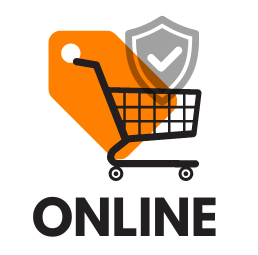When we talk about digital consumers, we are referring to those people who interact with the online channel daily, i.e., all those people with access to the internet and those with smartphones. For this reason, consumers are becoming more digitised every day and use different channels to buy the products they want.
Nowadays, you can buy anything on the internet, there are no limitations whatsoever, unlike a few years ago. The increase in online shopping is growing steadily, but it is not just that: the digital consumer, throughout his or her shopping journey, wants a unique experience, regardless of whether it is online or offline.
Consumers tend to combine all sales channels in their purchasing journey: they inform themselves on the Internet and buy in shop (webrooming) or vice versa (showrooming). In addition, digital-first is increasingly relevant as multi-device searches, combining desktop computer, laptop, tablet and smartphone, spread like wildfire. This process of always being informed is what makes consumers increasingly digitised. Using the internet to access information sources and find products to compare before buying is a very common and not at all unusual habit.
But are there any risks for consumers during their digital consumption experience? Basically, new technologies are inherently neutral. If used usefully in the interest of consumers and the market, they can help overcome risks of market exclusion, discrimination or new poverty. If ungoverned, on the other hand, they can represent a further critical element for consumers. It is undoubtedly true that digital tools have simplified, for example, the ways in which consumers can pay for their purchases online, allowing them to finalise them with ‘a simple click’, but this simplicity at the same time reduces the consumer’s awareness of contracting an obligation with all the (also) legal consequences that ensue.
Regulation, even when it ensures adequate information, is not enough on its own and risks lacking effectiveness due to the consumer’s lack of attention to the consequences of his decisions. It is very easy, in fact, for a person who is making an online payment not to stop and read the pre-contractual information and click directly on the box ‘I declare that I have read the terms and conditions’, accepting them in the dark. Consumer awareness must therefore be strengthened: financial literacy must therefore be the first safeguard of consumer (self-)protection so that the consumer is not subjected to unwitting risks.
Online is an innovative project that aims at reinforcing the key competences of teachers working with students (age 11-14 years old) enhancing teachers’ continuous professional development and consumer digital skills. Online will indeed offer micro-learning opportunities to teachers in schools promoting a cross-curricular approach and a community of practice to implement the European digital competence framework for consumers through extra-curricular activities and co-creation.
Indeed, the main goal of the project is to trigger the modernization and reinforce the response of the scholastic educational system to the main challenges of today hyperconnected world to promote digital skills, democratic values and fundamental rights though active citizenship and professional development opportunities for teachers.
Partners:
- Institute for Contemporary Education (LINK Group)
- Colegiul National Mihai Eminescu IASI
- European Digital Learning Network ETS
- Emphasys Centre
- Agrupamento de Escolas José Estêvão
Stay up to date on the project online:
Visit the website: http://online-project.eu/
Follow the project activities on
- Facebook: ONLINE.Project
- Instagram: Online_project_eu
